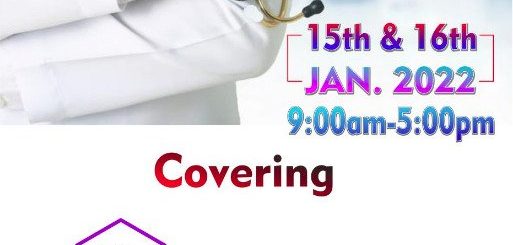Endline evaluation for the “Adolescent Sexual and Reproductive Health and Rights (ASRHR) Programme for Refugees in Nairobi County, Kenya” Project
BACKGROUND AND PROJECT DESCRIPTION
Location: Nairobi, Kenya
HIAS is a Jewish charitable, not for profit organization originally founded in response to the late 19th and 20th century exodus of Jewish emigrants from Imperial Russia. HIAS protects most at- risk refugees whose lives are in danger for being who they are. HIAS helps refugees rebuild their lives in safety, and advocates for the protection of refugees, ensuring that all displaced people are treated with the dignity.
HIAS began its Africa operations in 2002, launching the HIAS Refugee Trust of Kenya (HRTK). HRTK (also referred to HIAS Kenya) has its head office in Mimosa court, and operates in three sites Kayole, Kawangware and Eastleigh in Nairobi. These are refugee densely populated neighborhoods where most of refugee populations reside in Nairobi. HIAS serves the most at risk urban refugees including those who identify as LGBTI, persons with disability, victims of torture, single heads of households, the elderly, those with chronic illnesses, youth, unaccompanied and separated children and women most at risk. HIAS implements 4 major programs that include; (i) Mental Health and Psychosocial Support (MHPSS; (ii)Legal Protection; (iii) Economic Inclusion program and (iv) The Gender/GBV Prevention and Response program.
With funding from HIVOS Southern Africa, this project, Adolescent Sexual and Reproductive Health and Rights (ASRHR) Programme, was implemented by HIAS over a one-year period. The project’s goal was to increase awareness of and access to SRHR services for at least 1000 refugees in Nairobi County.
The project aimed at achieving the following objectives:
- Strengthen refugee youth led organizations with skills to promote and advocate for improved access to ASRHR services at the County level
- Empower refugee youth led/focused organizations through training in data collection and knowledge management
- Increase capacity of refugee youth led/focused organizations to advocate and raise awareness on SRHR
- Collaborate with refugee youth led/focused organizations to convene and coordinate SRHR activities
PURPOSE AND SCOPE OF EVALUATION
The primary purpose of the Endline evaluation is to understand how and to what extent project activities achieved the stated outcomes above including contribution of the project to achieving overall access to SRHR services of the target population
The detailed purpose of the evaluation is as detailed below:
- Assess the outcomes of the project activities underneath each project objective, including both intended and unintended outcomes, both positive and negative
- Assess and identify critical internal and external factors (including but not limited to the current COVID-19 context) that have contributed to, affected, or impeded project achievements, including how HIAS has managed these factors
- Identify and articulate lessons learned, good practices, and concrete recommendations to inform future program design for similar projects in this context
The key evaluation questions to be addressed include:
Relevance:
i. To what extent did the project design and objectives respond to the target population and refugee led organization needs and priorities, and continue to do so if circumstances change?
ii. Did the project activities respond the needs and priorities of the adolescent/youth refugees (girls, women, men and boys?
iii. How were stakeholders involved in the project?
iv. Did the refugee led organizations have the capacity (e.g., staffing) to implement the project activities?
Coherence:
i. The compatibility of the intervention with other interventions in the country office and sector.. What lessons can be learned?
Effectiveness:
i. To what extent has the project achieved its objectives and set targets as outlined in the project proposal? To what extent were the planned activities/ objectives achieved?
ii. What were the major factors influencing achievement or non-achievement of the objectives?
iii. To what extent can the refugee youth led/focused organizations involved in the project advocate for improved access to ASRHR services at the County level with ease?
iv. How project management contributed to the project outcomes
Efficiency
i. The extent to which the intervention delivered results in an economic and timely way.
Impact
i. What are the changes in refugee youth led/focused organizations as a result of the project?;
ii. Has knowledge on SRHR among the adolescent youth increased? Are more adolescent youths accessing SRH services?
iii. What are the results of the advocacy efforts by refugee youth led/focused organizations at the County level with respect to improved access to ASRHR services?.
iv. Intended and unintended outcomes because of the project.
Sustainability
i. The extent to which the net benefits of the intervention are likely to continue.
ii. Is the network of refugee youth led/focused organizations formed able to work together beyond the project lifespan to enhance access to SRHR for young people, particularly young refugees?.
iii. How the project has worked with the Nairobi County Government, community and other stakeholder structures in building their capacity to be able to sustain the project
iv. Identify the various challenges that may affect the sustainability of the project and suggest solutions
SCOPE OF THE EVALUATION
The study will be conducted within Nairobi County targeting refugee youth led/focused organizations and young people (boys and girls) between ages 18 – 24 years. The design and implementation of the Endline evaluation must also ensure that principles of gender equality, inclusion and non-discrimination are considered and acted upon throughout, and that the meaningful participation of the most vulnerable groups and other key stakeholders is promoted in the design and implementation of the baseline.
METHODOLOGY OF THE STUDY
The consultant will develop a detailed research methodology in consultation with HIAS program and M&E team. The following methodologies will be utilized, but should not be limited to:
- Desk review on awareness of and access to SRHR services among refugees: The consultant will review project documents and other relevant secondary data sources.
- Quantitative data to be collected through a representative survey.
- Qualitative approaches, such as focus group discussions and key informant interviews, participatory exercises and approaches will be used.
Triangulation of information gathered during the quantitative and qualitative research is crucial in this study, with reflection on how the findings relate to the secondary documentation. The assessment is to be consistent with SPHERE standards. [1]The Endline evaluation will be organized in a participatory way, including HIAS staff, local actors and project beneficiaries. All data must be collected in a COVID-19-safe manner as per HIAS’ COVID-19 safety policies and as aligned with all national and local directives and guidelines in Kenya.
EXPECTED OUTPUTS AND DELIVERABLES
The expected key outputs and deliverables are:
- Inception Report: This report will present the detailed methodology, literature review, data collection tools/instruments and a data collection and analysis plan. The inception report will be discussed with the HIAS evaluation team for any inputs.
- Draft report for stakeholder review—clearly identifying information relevant to the evaluation objectives; as well as data gaps and areas that may require further assessment.
- Raw and cleaned final dataset(s) containing all data collected for the evaluation, including survey responses and KII/FGD transcriptions.
- Final report (incorporating inputs from the review): The main body of the report should be a maximum of 30 pages in length, excluding table of content, tables and annexes).
- The findings will be presented in a validation meeting with key HIAS staff and stakeholders:
TIME-FRAME
Probable date for the baseline survey to commence will be April 2022 and is expected to take a maximum of 18 working days, which includes desk-review, preparation, and implementation, report-writing.
INSTITUTIONAL ARRANGEMENT
The HIAS Kenya M&E team will coordinate with the consultant all the evaluation tasks. In addition, the Program Manager, Head of Programmes, Country Director, and Regional MEAL and GBV Advisors will provide all the necessary technical support required throughout the evaluation process.
HIAS will provide:
- Relevant documentation and background information.
- Contacts of relevant stakeholders and set up meeting(s).
- Staff to conduct the survey.
- Consolidated feedback/guidance on draft reports and strategy.
REQUIRED EXPERIENCE AND QUALIFICATIONS
We are looking for a Consultant/team with the following skills and qualifications;
- The team leader should preferably possess an Advanced university degree (Master’s degree or equivalent) in social sciences, mental health, psychology, law, political science, international relations, or other relevant disciplines.
- At least 5 years demonstrated experience in designing, implementing, and conducting evaluations of humanitarian and/or emergency programming, preferably working with refugees and/or forcibly displaced populations
- Demonstrable expertise on SRHR and gender equality, preferably in Kenya or the region.
- Demonstrable expertise on refugee operations especially in Kenya.
- Experience conducting and facilitating interviews and group discussions in cross-cultural contexts
- Experience designing and implementing beneficiary-based survey research
- Excellent and demonstrated understanding of ethical issues in research, including child protection.
- Capacity to use mobile data collection for data collection, and analysis of survey results.
- Excellent research and communication (oral and written) skills.
- Excellent verbal and written communication in English required.
APPLICATION PROCESS AND REQUIREMENTS
Qualified and interested parties are asked to submit the following:
- Letter of interest in submission of a proposal
- A detailed technical proposal clearly demonstrating a thorough understanding of this ToR and including but not limited to the following;
- Consultant/Company Profile
- Proposed methodology including areas of piloting, Sample Size Determination, and a proposed consultancy work plan
- Demonstrated previous experience in similar assignments and qualifications outlined in this ToR (with submission of the most recent report of a similar assignment)
- Proposed data management plan (data collection, processing and analysis).
- Team composition and level of effort of each proposed team member (include CVs of each team member).
- A financial proposal with a detailed breakdown of costs for the study quoted in Kenya Shillings.
[1] https://www.spherestandards.org/resources/sphere-for-monitoring-and-evaluation/
How to apply
The Applications should be submitted to recruitment.kenya@hias.org indicating the code: HRTK/EE/03/2022 on the subject line. The deadline for submission is 24th March 2022.
Important: Only shortlisted candidates will be contacted.
HRTK is an equal opportunity employer, does not charge candidates for recruitment and dissociates itself from any entity defrauding candidates








